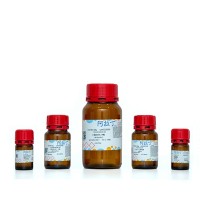The carbohydrate-binding properties of plant and animal lectins have found many diverse applications in biomedical research
that are comprehensively treated in the various chapters of this book. In our studies, lectins are often applied for the in situ
detection of their respective binding sites in specific cells either grown in culture or present in various tissues (see
Chapter 3
). In order to complement these in situ
localization studies, blots are analyzed using lectins to identify glycosylation patterns of glycoproteins that contain accessible
lectin-binding sites in their oligosaccharide side-chains. The isolation and characterization of lectins which exhibit a narrow
spectrum of reactivity with oligosaccharide structures has provided new possibilities for such kind of analyses. In comparison
to Concanavalin A, which recognizes glucose/mannose residues in terminal nonreducing position as well as internal linkages
(1
), lectins such as the Bowringia milbraedii
lectin (2
), the Narcissus pseudonarcissus
lectin (3
), and Galanthus nivalis
lectin (4
) react with well defined processing intermediates of asparagine-linked oligosaccharides. Another example for such a high
degree of specificity is provided by sialic acid-specific lectins such as the Sambucus nigra
lectin I (5
), the Maackia amurensis
lectin (6
,7
), and the Amaranthus caudatus lectin
(8
-10
). These lectins, in contrast to the general sialic acid binding Limulus polyphemus
(11
) and Limax flavus
(12
,13
) lectins, discriminate terminal sialic acids present in different ketosidic linkages.






